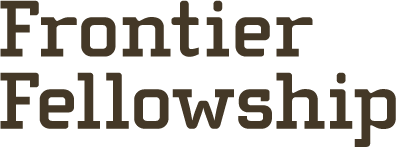Charlotte XC Sullivan

Charlotte XC Sullivan is the original Frontier Fellow. A citizen designer, expedition artist, and essayist she is also the Market Garden Assistant Manager at Shelburne Farms in Vermont. She is a co-founder of May West, an innovative textile company specializing in milkweed cultivation as an alternative to goose down. She proudly serves on the Board of Directors at Cabin-Time, a roaming artist residency program to remote places. She has also been a frequent volunteer at Arts in Parts, a free ecology-based arts program for kids in Rockaway Beach, New York.
Antipode installation, 2011
Antipode and the artist, 2011
“As Young Professionals, we value the potent effect of collaboration over egotism, community participation over subversive upheaval, and local solutions over top-down decrees. To this Great Revolt we hereby pledge allegiance.”
A year or so after Jack Forinash and Maria Sykes arrived in Green River, I read these lines (see left) in an essay they wrote for CRIT, the Journal of the American Institute of Architecture Students. This statement resonated with me deeply, and while, at the time, I was very far away from Green River, I knew I had to find a way to meet them. On January, 8, 2011, I did just this, arriving in time for supper via train from Springfield, Massachusetts.
I was compelled to work with Jack and Maria, two multi-faceted designers whose ethics echoed my own, and I also had an artistic longing to work in the desert. For many years, I had been inspired by the work of Andrea Zittel, who lived a bilateral life in California: she maintained a studio practice in Joshua Tree and an academic career in Los Angeles. I had only studied her working patterns from a distance, but felt a kinship to the way she had established a duality between country and city life. (Five years later Zittel would decide to host her legendary High Desert Test Sites event in Green River). Since I didn’t know of any formal residency program that existed at Zittel’s compound, and winter was an unideal time to propose working at the other desert-based residency program I knew about (The Center for Land Use Interpretation’s Wendover outpost) it seemed like the easiest way to be able to complete the work I was interested in making was to create my own residency program. However, I did not want to do this alone.
The Frontier Fellowship began out of a personal desire to work artistically in a remote and expansive environment, but also a desire to redesign the current artist residency model. Based on what I knew, albeit from a distance, of what was already happening at Epicenter, Green River seemed like an ideal place to develop this new model. In the same way that Epicenter was working to create a new model for architectural practice, I was seeking a new model for artistic practice. I had found my ideal collaborators.
Place Portrait, West, 2011
Core questions in establishing the framework for the Fellowship were: What happens when artists attend town meetings to generate ideas and garner inspiration, instead of scrolling through tumblr? What would it be like if artists were working in tandem with city planners and public school teachers, not just gallery owners and publicists? How do artists impact rural economic development? How does a bilateral art practice influence levels of innovation and production? These foundational questions continue to inform the Fellowship as it functions today.
Without the participation of the artists who have contributed their time and creativity to Epicenter since 2011, these questions would have gone unanswered in Green River, Utah. This exhibition is a physical culmination of answers to these questions and the first major public display of work generated by the Frontier Fellows of Epicenter. I hope it is the first of many more to come.
Tumblelamp prototype at 285 S Long, 2011









